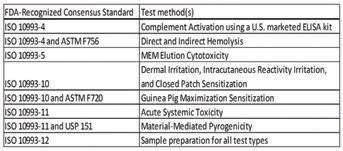
7 minute read
CYBERSECURITY
Manufacturing Cybersecurity: Critical Components for Risk Assessment
KIM OVERSTREET, SENIOR CONTENT STRATEGIST, ALIGNMENT, PMMI MEDIA GROUP
1. By the second quarter of 2020, cyberattacks targeting manufacturers accounted for 33% of all incidents. 2. Manufacturers have lost hundreds of millions of dollars as a result of cyberattacks. 3. Manufacturers need to implement cybersecurity measures across all networking operations, including machine networks.
TOP THREE TAKEAWAYS
According to a new report from PMMI Business Intelligence, many manufacturers are still not aware of the tangible risks that result from a lax cybersecurity approach, even despite the growing frequency of cyberattacks directed at manufacturers and the heavy financial burden of costly fixes and expensive downtime. And the speed of industry innovation has often outpaced the digital security infrastructure at manufacturing sites.
Cybersecurity for manufacturers encompasses more than log-in security and email scams. Every sensor connected to a machine, every machine connected to a network, and every network connected to a centralized control system are potential pathways for cybercriminals.
Since every connected device at an operation can potentially be exploited in a cyberattack, manufacturers must be cognizant of the fact that their systems, physical infrastructure, and employees, must all be protected from nefarious outside forces seeking to gain entry into the operation.
There are critical components that need to be assessed to achieve a robust cybersecurity system: • Perimeter or network detection and firewalls to safeguard vulnerable points, such as: sensors, actuators, and anything with an IP address. • Implementing cybersecurity best practices and end-point management. • Cybersecurity budgeting, staff training, and keeping up to date.
Said one director of a managed services provider, “Best practices for cybersecurity require a holistic approach across the entire company at every vulnerable point of entry.” And another managing director at Cyber Partner said, “At this time in our world, it is not if there will be an attack on your company, it is when, and that statement applies to all companies regardless of size.”
In the first quarter of 2020, attacks targeting the manufacturing sector accounted for 11% of all cyberattacks that occurred across all industries, and by the second quarter, cyberattacks targeting manufacturers accounted for 33% of all incidents across all industries. In 2020, 28% of all breaches recorded occurred at small businesses.
This increase in attacks is especially alarming given the growing cost to manufacturers that experience a cyberattack. According to the report, in 2020, the average cost of a cyberattack stood at around $3.86 million, and that does not include the impacts of lost opportunity or damaged customer loyalty. It often takes manufacturers a significant amount of time to identify, isolate, and resolve a cyber intrusion—on average 280 days to identify and contain, but to completely resolve an attack and address any damage, affected operations must be shut down for an average of two weeks.
Despite these facts, 34% of manufacturers state that the risks of a cyberattack and the need to implement a cybersecurity defense are not even on their radar for consideration. And in many cases, manufacturers have not kept up with plans to safeguard their technology infrastructure, even if they had them previously.
Download the PMMI Business Intelligence report 2021 Cybersecurity: Assess Your Risk by visiting: hcpgo.to/cyberreport
Toxikon’s Chris Parker explained that the ASCA program revolves not just around the technical standards, but quality systems as well.

Demystifying FDA’s ASCA on Biocompatibility for Expedited Review
KEREN SOOKNE, DIRECTOR OF EDITORIAL CONTENT
1. Device manufacturers can potentially speed review by testing to recognized standards performed at accredited labs. 2. Labs go through rigorous accreditation. The FDA website will show which labs are accredited for which methods. 3. If all testing is performed without issues, manufacturers may submit a summary report instead of a full report to the FDA.
TOP THREE TAKEAWAYS
A2020 FDA guidance may soon help boost consistency in medical device testing and expedite review of submissions for eligible devices.
At MD&M BIOMEDigital, Chris Parker, Head of In-vivo Biocompatibility at Toxikon, explained that in Sept. 2020, FDA published fi nal guidance on the Accreditation Scheme for Conformity Assessment (ASCA), launching a program where labs that perform testing for ISO 10993—Biocompatibility and IEC 61010/IEC 60601–Basic Safety and Essential Performance can become accredited by the FDA.
The key ASCA takeaway for manufacturers is that the testing performed to recognized standards at these accredited labs may be submitted with only a summary report instead of a full report (if no unexpected results occur) and they can expect an expedited review during submission.
Parker explained that this eff ort began as a pilot program, advancing to FDA guidance documents in Sept. 2020: • Program guidance: The Accreditation Scheme for Conformity
Assessment (ASCA) Pilot Program - Final Guidance • Basic Safety and Essential Performance standards-specifi c guidance: Basic Safety and Essential Performance of Medical
Electrical Equipment, Medical Electrical Systems, and Laboratory Medical Equipment — Standards Specifi c Information for the
Accreditation Scheme for Conformity Assessment (ASCA) Pilot
Program • Biocompatibility standards-specifi c guidance: Biocompati-
bility Testing of Medical Devices—Standards Specifi c Information for the Accreditation Scheme for Conformity Assessment (ASCA)
Pilot Program
Participation is voluntary, and it revolves not just around the technical standards, but quality systems as well.
In early 2021, the fi rst wave of accredited bodies (ABs) was published, and in April the fi rst wave of FDA-approved labs was posted. There were 54 labs on the list of press time.
The FDA website will show (1) which labs are accredited and (2) what they’re accredited for as a lab could be accredited for multiple methods, or just cytotoxicity, for example. • The FDA will audit both ABs and test labs as necessary. • When a manufacturer performs testing at an accredited test lab, the lab will provide a standard report as well as a summary report. • Provided testing takes place without unexpected results, the manufacturer can submit to FDA with a Declaration of Conformity (DOC) and summary report for pre-market submission review.
Device eligibility
It’s important to note that all devices are eligible except for liquids, creams, gels, hydrogel devices, devices containing nanomaterials, and absorbable and in situ polymerizing devices. “Things that are going to break down, or have an active integration that could polymerize such as a skin glue, because these are more of a dynamic process… the ISO standards are written more for an extraction type of environment and these may have some nuances with irritation. We may need to do some histology to characterize a bit better the reaction that’s going on,” Parker explained. But devices such as catheters, bone screws, and pacemakers are eligible.
ASCA labs and methods
Parker mentioned that while MEM Elution Cytotocity is included for now, other cytotoxicity methods such as the MTT and NRU may one day be added.
FDA requires training for technicians, study directors, and trainers at labs. Study directors must build up signifi cant education, time, and experience, while trainers must hold extensive experience in each technique. Profi ciency evaluations ensure that the “test lab’s eyes” see things the same way that accredited bodies’ eyes do. “We have to provide an index of all the SOPs that are particular to the ASCA methods we’re applying for and provide all of those to the FDA,” said Parker. “We also have to supply all of our raw data sheets that we use for collecting data on a study, all of our protocols, and report templates to make sure we’re asking for the right data, we’re recording the right amount of data, and we’re reporting the right amount of data.”
Control over sample prep is key—times, temperatures, etc. Any post extraction changes that take place such pH drops or rusting may require manipulation to proceed with testing, “but then you’re not performing a standard method anymore as there could be things going on with the device that are unexpected,” he said. At that point, the FDA would likely prefer the full report versus the summary version.
Key takeaways
• The brand owner will need to prepare a DOC that includes where and when testing was performed, how test articles compare to predicate, and issues brought up by the lab that needed to be resolved. If anything was questionable, such a result that technically passed but that the lab notes from experience (in seeing thousands of devices) that it may be indicative of a future issue, then discussion of this—as well as any adverse or unusual fi ndings—should be included. • If all testing is performed without issues, manufacturers receive a lab’s “stamp of approval” and then they may see expedited timelines in approval of their submission. • Parker said he hopes that the entire industry—manufacturers, tests labs, and the FDA—will gain consistency in how they perform testing and report data through ASCA. Additionally, this represents a new open channel between FDA and test labs to get questions ↑ A list of all the methods that are currently contained within the program as of press time. A answered and innovate together. lab may be certifi ed for one, some, or all methods. (Credit: Toxikon)










